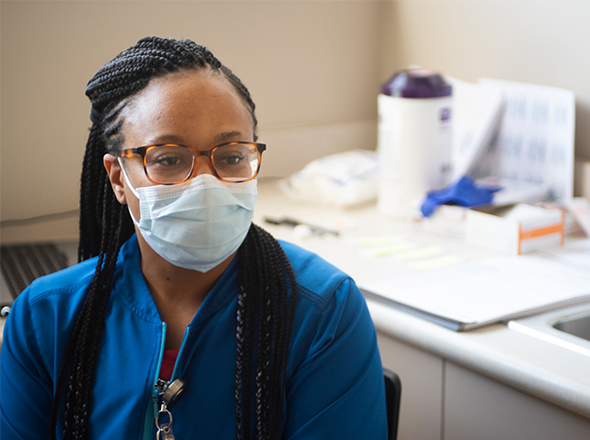This is the last of a four-part series on combating burnout by building resilience by Ashley Gilmore, MSSW, LCSW-S, director of behavioral health clinical services at Texas Health Presbyterian Hospital Dallas. Gilmore has researched and led presentations on building resilience throughout 2020 and 2021.
Over the past three weeks, I’ve shared practical tips for beating burnout by building resilience through connection, wellness and meaning. In this last of our four-part series, I’ll address healthy thinking and how you can use your mind to confront challenges with confidence.
Consider an obstacle course, featuring walls to be climbed, hoops to be jumped through and bridges to be crawled under. Burnout would have you looking for a way around it or for how to get out of even trying it. Healthy thinking would have you look directly at the course and start figuring out how to make it through with the belief that you will complete it.

Healthy thinking puts us in a more empowered place to deal with challenges. It allows us to keep our minds open to creative problem-solving and good decision-making.
Use these strategies to build healthier thinking:
- Reframe. When you catch yourself thinking negative thoughts, reframe them. Look for opportunities in the situation or solutions to the problem. Use more-positive language when thinking about a situation. For example, instead of thinking, “I can’t handle this,” try thinking, “This is a difficult situation, but I have worked through difficulties before. I can do this again.” Try remembering what has helped before and see what can be repurposed to the current situation.
- Scan for positives. When you feel yourself spiraling into a negative thought pattern, pause and scan for the positives in the situation. For example, if you are struggling with computer issues, step outside, take a deep breath and be grateful for a short break. Or, if you are helping care for several challenging people on the same day, watch for the positives of how you and your co-workers are supporting each other. Intentionally noticing the good things about our day has a profound impact on our overall mental health.
- Practice mindfulness. Strive to be present and fully engaged in whatever you are doing in the moment. For example, as you open an exam room or patient room, be aware of walking into the room. Ground yourself in the present by using your five senses: Think about five things you can see, four things you can feel, three things you can hear, two things you can smell and one thing you can taste.
- Strengthen your reorganizational skills. Sometimes, our best-laid plans don’t work and we get stuck on how to move forward because the original plan brought structure and organization to a situation that felt like chaos. Being skilled in reorganizing our responses to a situation allows us to come up with a “Plan B” or a “Plan C.” The next time you feel rigid or overwhelmed by chaos, pause, take things one step at a time and work to strengthen your reorganizational skills, e.g., your ability to make and accept a “Plan B” or a “Plan C.”
Healthy, positive thinking is not about denying reality but rather cultivating an effective tool for coping with reality with resilience.
What are some ways you develop healthy thinking in your work?

